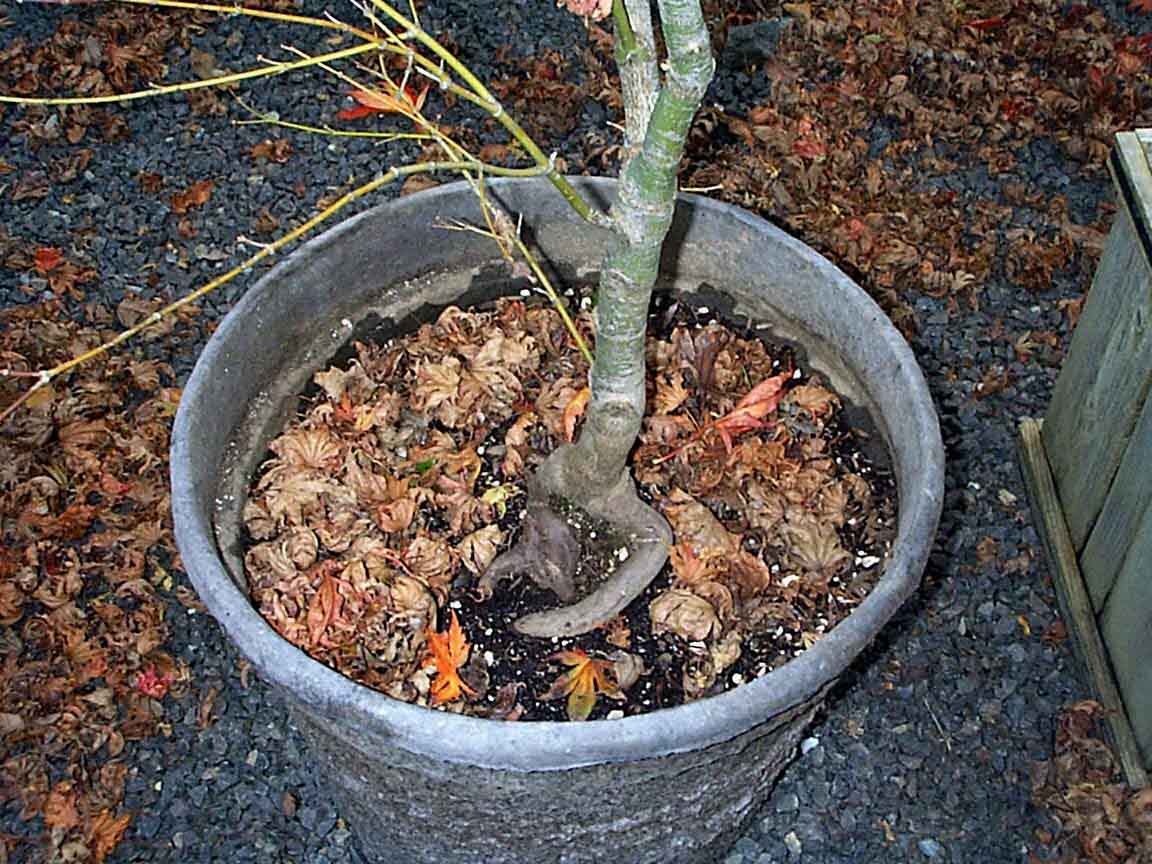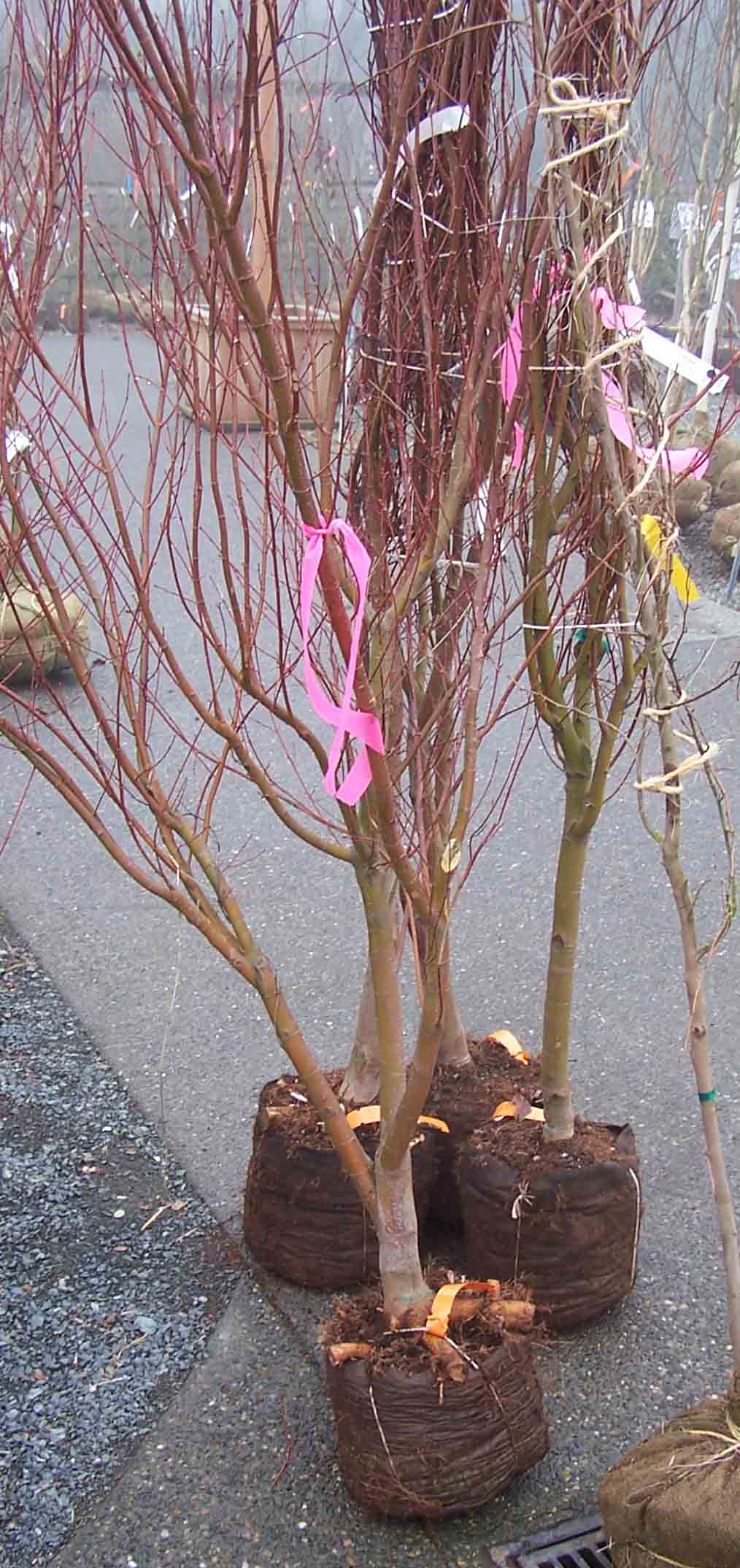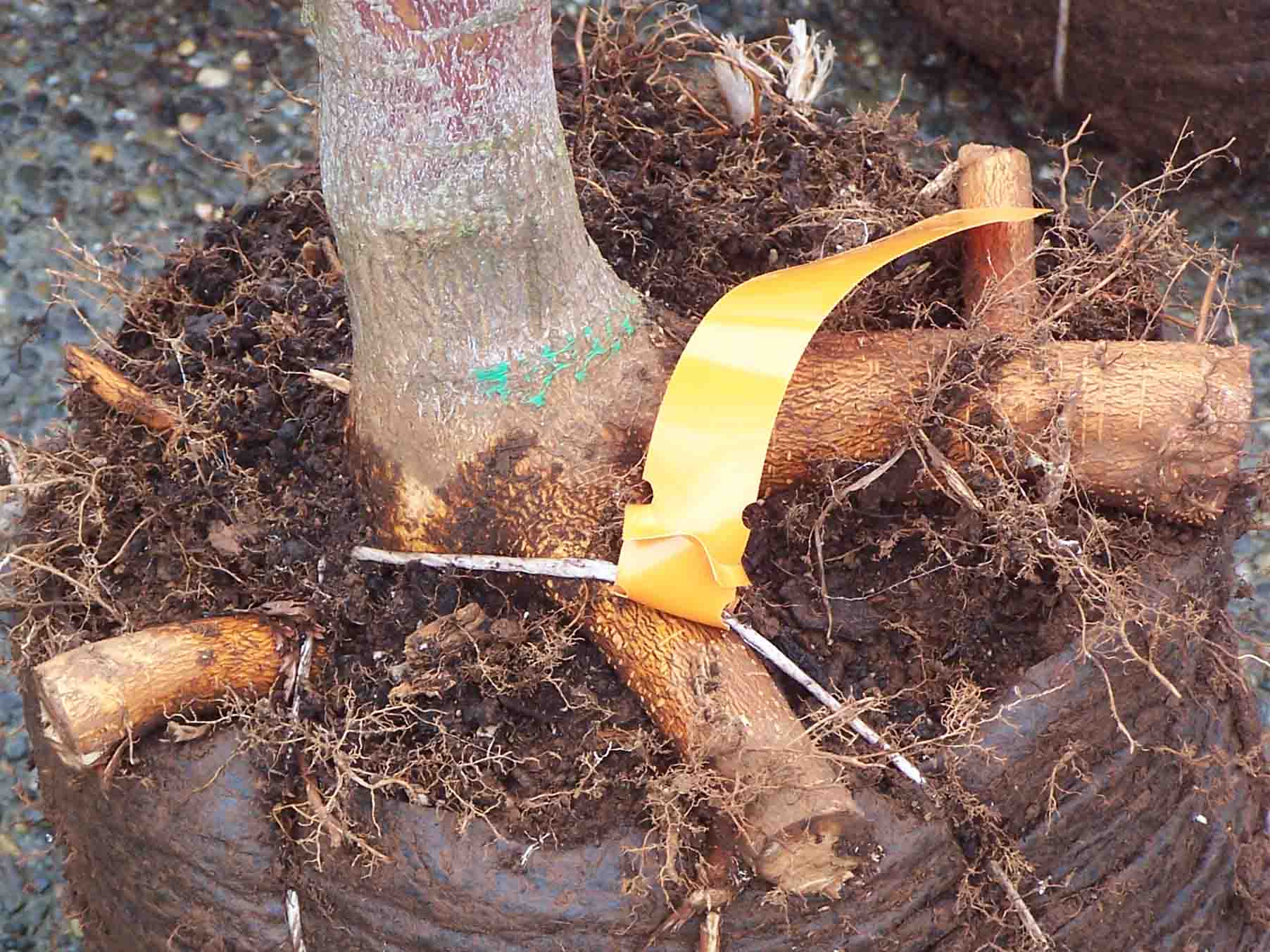Well, I’m recovering from this simply horrific chest cold or whatever it is and feeling brain function returning. The last time we were at our virtual nursery, we were looking for root flare and inspecting the trunk for damage from improper bagging. Since we’re already down on our hands and knees, let’s consider roots. In general, you really don’t want to SEE roots, except where they meet the trunk (the root flare). The presence of coyly crossed “knees” in this photo is a clear indicator of a plant that wasn’t potted up quickly enough:

Likewise, while the fused, circling woody root mass in this next photo might be aesthetically interesting, it sure doesn’t make a functional root system:

It’s pretty easy to avoid these types of plants, because you can see the root problems before purchasing. The hidden root problems, such as those I’ve shown in earlier posts, are tough to find until (or if) you take all the extraneous stuff off of the root ball.
Finally, there is a new production practice that really fries my potatoes. What really makes me angry is that these trees had absolutely LOVELY roots – a nice flare, woody roots spreading radially – and then they were butchered – and left unprotected:


I can think of no legitimate reason for this practice. I’ll be curious to hear my colleagues’ thoughts, as well as those from the blogosphere.
Sheesh. Are those root balls bagged under the roots? It looks as if this was done simply to keep the root balls small enough to cram into a sales area, especially given the diameter of what look as if they had been quite nice roots. The only reason I can think of for doing this is to sell the plants — that is, get 'em out the door with the cash register ringing up some poor unsuspecting buyer's purchase. Did you see this at a box store?
This is a great series of posts. I have found it intersting how few "landscapers" know what to look for when they choose nursery stock besides whats the biggest or what has the most blooms on it.
I would also find it interesting how you evaluate trunk structure when evaluating nursery stock.
Well, Deb, I guess you could call them root balls, but all that's there is a bunch of media with some fine roots. And sadly enough these trees were at one of Seattle's best known – and most expensive – nursery.
@Hamons, thanks for the kind words! I will be sure to do a posting on trunk structure as well, unless Jeff or Bert beats me to it.
Goodness me! I don't know what has surprised me more; the fact that these trees have been butchered the way they have, or that people would actually buy a tree whose roots are sticking out the top of a container like that. Even for a lay person, wouldn't such a presence of severed roots above the media level send off warning bells and whistles in their head? Perhaps not. It boggles the mind.
Jimbo, I think consumers blindly trust nurseries to provide good stock, but as I've found many retail nursery owners and managers are woefully untrained in plant sciences and have no idea what they should be accepting, and what they should be rejecting.
wow these are really nice gardening tips!
Thanks, Namoro! We're glad you're here.
There is no doubt that there are serious problems with the trees shown in this post. However, there is an implication that this is standard practice, or at least not an isolated circumstance. In my thirty years plus in buying trees and visiting tree growers throughout the country I have rarely seen similar problems, nor in visiting garden centers.
There are issues regarding container and field grown trees that are worthy of continuing discussion, and there is value in pointing out occasional horror stories, but they should explained as oddities, not the norm.
I know from experience that most growing nurseries do their work professionally, and that the garden center or landscape customer can trust that the trees they are purchasing are free from significant defects.
Dave, unfortunately in this part of the country, these ARE the norm in our nurseries. Jeff and Bert have, like you, not experienced these issues in the Midwest. If these problems were not so rampant in every large, expensive nursery I've visited, I wouldn't be worried about it. But I've been documenting these problems in the Seattle area for over 10 years, and it's getting worse, not better. I have almost given up buying trees and shrubs for my own landscape because good quality materials are so difficult to find.
Having received and rejected similarly butchered tree stock as the ones shown, I have to say the retailer was not doing it's job. Happy customers are repeat shoppers, so I want them to be successful with our products, so we make sure to buy quality and send back anything that is not up to those standards. Luckily being a xeric nursery, I don't have to deal with that many BB trees.
Good for you, Hap! I wish more retailer nurseries would put the effort into understanding and enforcing quality plant standards. It would make gardening a lot more fun for everyone.
Sorry for coming late to the party….It looks like these trees were harvested by someone who had a tree spade which was too small, but who just couldn't resist digging them anyway. These aren't trees I'd consider buying. This looks like a "new grower" problem and I'd be very interested to know how old the operation which grew these trees was. Every retailer (and grower) should own the American Standard for Nursery Stock and reject anything that doesn't conform to the specs outlined in that book. For those of you who don't know of it, this book is very specific about what is and isn't acceptable for nursery stock — and if a shipment doesn't conform to the specifications outlined in it then it then that shipment should be rejected.